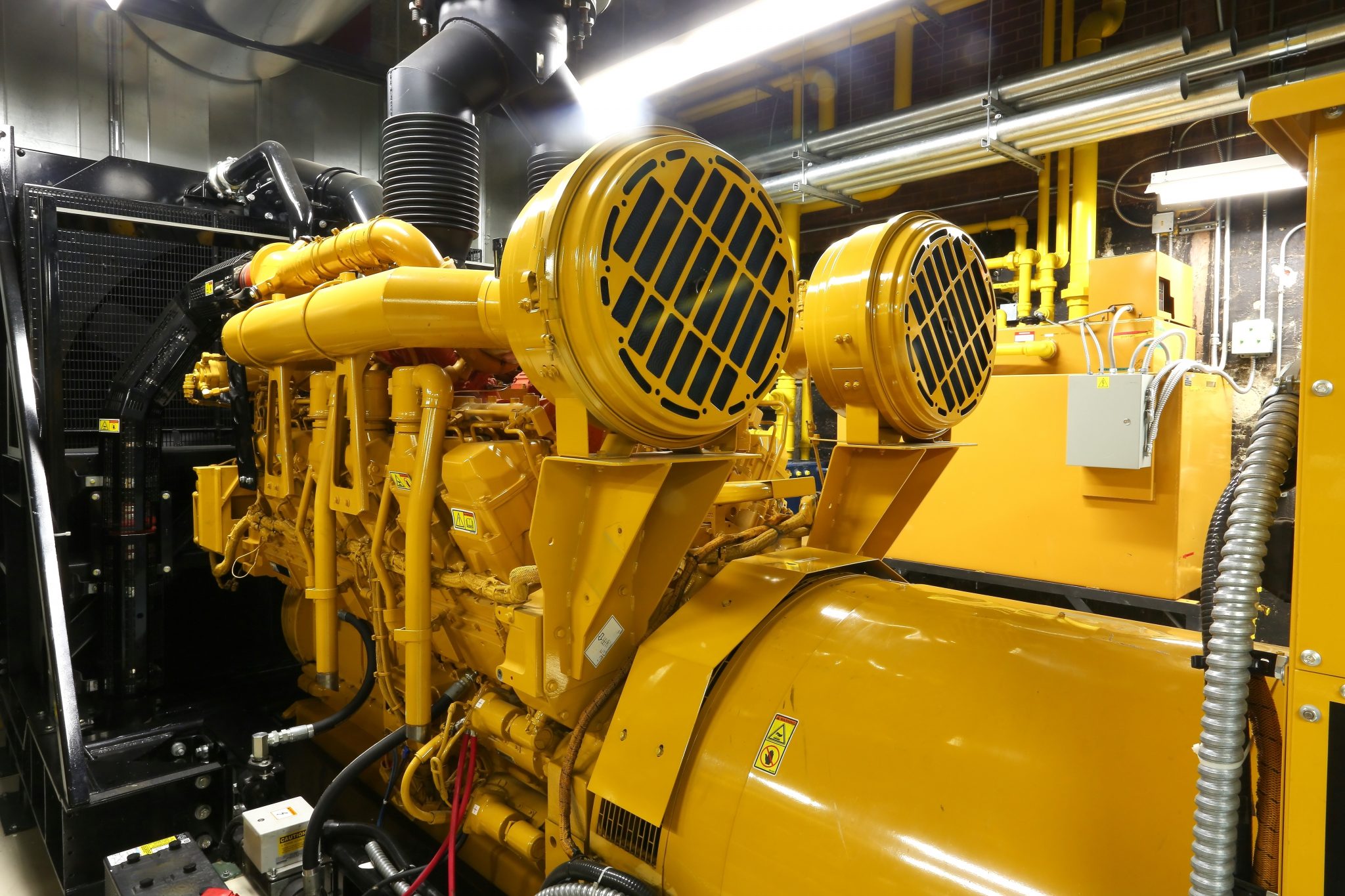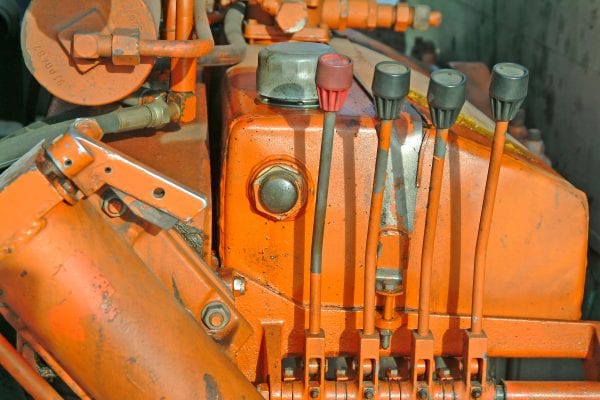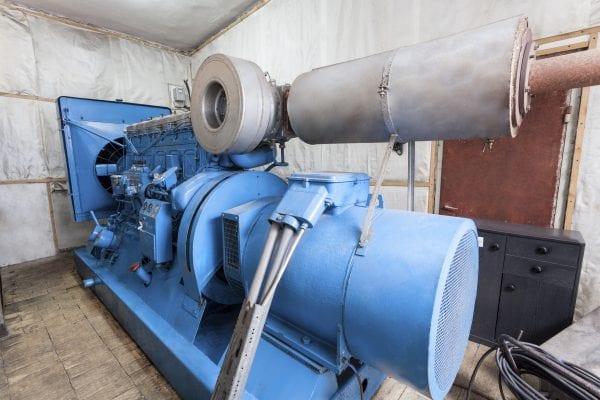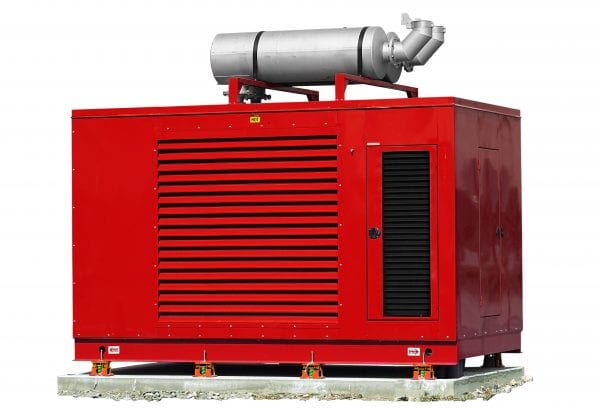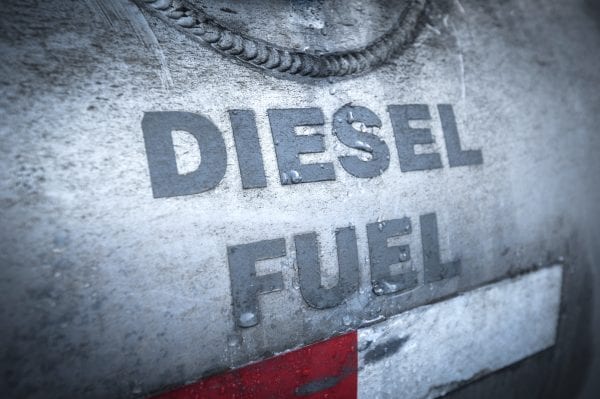Emergency Handbook

Standby generators are powered by tractors or engines and may be either portable or stationary. Engine-driven units available may have an automatic or manual start and are powered by gasoline, LP gas (bottled gas), or diesel fuel.
Generators must provide the same type of power at the same voltage and frequency as power lines supply. This is usually 120/240 volt, single phase, 60-cycle alternating current (AC). Two- to 2¼-hp engine capacity with the proper drive system must be available for each 1,000 watts of generator output.
Size of Generators
A full-load system handles an entire farmstead’s energy needs. An automatic, engine-powered, full-load system begins to furnish power immediately or within 30 seconds after power is off. A smaller, less expensive part-load system may be enough to handle essential equipment during an emergency.
Power take-off (PTO) generators cost about half as much as engine-driven units and can be trailer mounted. A part-load system operates only the most essential equipment at one time. For most farms, this is adequate, if the generator has the power to start the largest motor.
Consider what you need. For example, the milk cooler of the ventilation fan must operate continuously, but operation of the silo unloader and mechanical feeding system can be delayed until the milking chores are over.
Installation
Wiring and equipment must be installed in accordance with the National Electrical Code, local ordinances, and the requirements of the power supplier. It is important to have the proper equipment for disconnecting the generator from public utility lines. Most companies require the installation of a double-pole, double-throw transfer switch or its equivalent for this purpose. Check with your electrician or power company representative for installation instructions and inspection.
Location and Safety Features
Large engine generators are best located in a dry-conditioned building. Inlet and outlet air ducts must be large enough to carry off excess heat. Air inlets and outlets should open at least ½ square foot for each 1,000 watts of generator capacity. Combustion fumes must be carried outdoors safely. Exhaust pipes must be at least 6 inches from combustible material.
Operation
An automatic standby unit starts automatically when power fails, and it stops when power is restored.
When using an engine-driven generator with manual start, or when using a tractor-driven unit, follow this procedure when power fails:
Call your power supplier and advise them of the conditions.
Turn off or disconnect all electrical equipment.
Position the tractor or engine for belt or PTO drive. Check the direction of exhaust pipes. Be sure there is no danger of fire. Put some distance between the equipment and animals or other people.
Start the unit and bring the generator up to proper speed (1,00 or 3,600 rpm). The voltmeter indicates when the generator is ready to carry the load.
Turn the transfer switch to the generator position.
Start the largest electric motor first. Add other loads when each is up to operating speed. Don’t add too many loads too fast. If the generator quits, then repeat steps 2, 4, and 5.
Check voltmeter frequently. If voltage falls below 210 volts for 240-volt service or below 105 volts for 120-volt service, disconnect some equipment to reduce the generator load.
When commercial power is restored, return the transfer switch to the normal power position. Then stop standby unit. Power down, switch loads, then repower equipment.
Maintenance
Keep the unit clean and in good running condition at all times for immediate use. Accumulation of dust and dirt can cause the motor to overheat when operated.
Follow the maintenance instructions in the manufacturer’s manual. A short operation at set intervals keeps the engine in good operating condition. Regularly scheduled warm-ups are necessary to keep standby generators in good working order.
Change fuel every 6 months. Use a fuel stabilizer to keep fuel from becoming stale.
Inspect for damage from weather and rodents.
Create a Farm Emergency Kit
- Be sure to include the following:
- sandbags and plastic sheeting in case of flood
- wire and rope to secure objects
- lumber and plywood to protect windows
- extra fuel in a safe location for tractors and vehicles
- hand tools to assist in preparation and recovery
- fire extinguishers at all barns and in all farm vehicles
- safe supply of food to feed livestock
- gas-powered generator in case of power failure
Preparing to Evacuate Your Farm in a FloodProne Scenario, ACES-2249
Used by permission of the Mississippi State University Extension Service.
Use pesticides only according to the directions on the label. Follow all directions, precautions, and restrictions that are listed. Do not use pesticides on plants that are not listed on the label. Trade and brand names used are given for information purposes only. No guarantee, endorsement, or discrimination among comparable products is intended or implied by the Alabama Cooperative Extension System. This publication is for information purposes only and should not be a substitute for recommendations or treatment by a health care provider.

